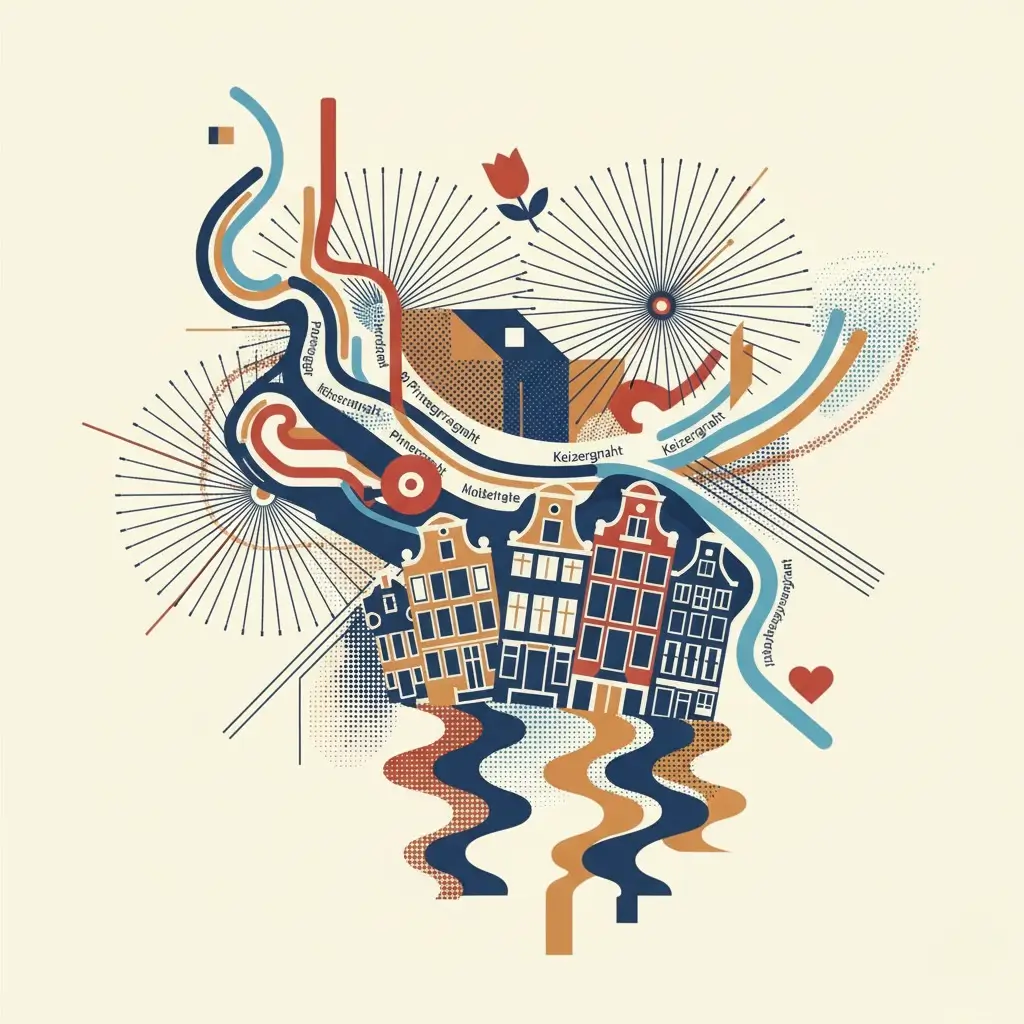There are cities of avenues, straight and clear, where everything is subject to the logic of wide streets. And then there is Amsterdam. A city that lives by the laws of water and bicycle bells.
On the first morning, you confidently open a map to plot a course from the station to the museum you want to visit. The plan seems simple. But after a couple of bridges, indistinguishable from each other, you realize it doesn’t matter. You are swept up by the flow of cyclists, silent and swift, and now you are turning the wrong way because you were distracted by how perfectly a red bicycle with a basket of flowers was parked by the canal.
The blue dot on your phone screen floats helplessly somewhere between three canals. And at that moment, when you put your phone in your pocket and decide to just go where the flow takes you, the real Amsterdam begins.
1. Let Go of the Map (The Art of Getting Lost)
This is a city where the main mode of transport is yourself. The noise of motors is drowned out here by the continuous ringing of bicycle bells, the rustle of tires on the cobblestones, and the buzz of voices from street cafes. This sound is not deafening, but lulling. It sets a rhythm that is impossible not to obey. You stop rushing and start moving in time with the city.
What happens: You walk without a destination, choosing the bridge that seems the most photogenic. And suddenly you turn into an inconspicuous archway, and behind it is a quiet, hidden courtyard-hofje. You discover a shop that sells only tin soldiers. Or you notice how crookedly, embracing each other, three narrow houses have stood, propping each other up for centuries.
The lesson: This is the main principle that Amsterdam teaches: sometimes the best plan is to go with the flow.
2. Find Order in Chaos (The Principle of Creativity)
We are used to controlling everything. At work, in life. We have deadlines, sprints, roadmaps. We build the most efficient route to the goal. And that’s right, it helps to stay on course.
What happens: When you stop looking for a specific address, you start to see the details: the furniture hooks under the roofs of old houses, the curtains in the huge windows on the ground floors, behind which ordinary life flows, the reflections of dancing facades in the dark water of the canal.
The lesson: The most elegant solutions and creative ideas are often born not from a rigid plan, but from managed chaos. From those moments when you allow yourself to get distracted, to take the untrodden path, to give in to curiosity.
Conclusion
Perhaps this is where the magic lies. And not just in travel. Sometimes you just need to loosen your grip. Stop checking the map every minute and allow yourself to become part of the general flow for five minutes. And then, in this rhythmic movement, you can discover something much more valuable than the destination.
